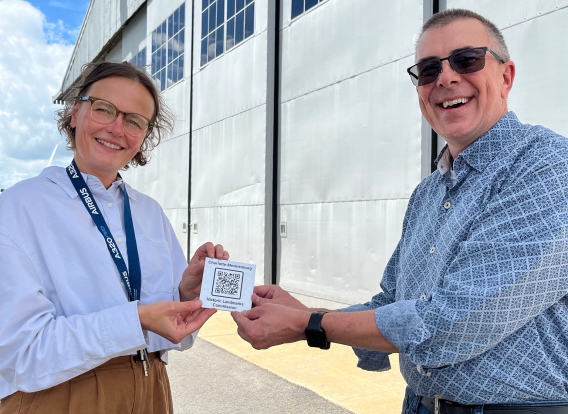Scanning Into History: QR Codes Provide a Snapshot into the Past
Accessing local history is as easy as opening your camera app. The Mecklenburg County Historic Landmarks Department has been placing QR code placards at historic sites, making it easier than ever for residents and visitors to discover local history.
More than 35 placards have been placed at 14 landmarks throughout Mecklenburg County. To learn the stories behind these notable sites, simply open the camera app on your smartphone, scan the code and click the link that appears.
Learn about places such as:
- Savona Mill: At one point, this textile mill dating back to 1915 employed 550 workers. The building has been revitalized and is now office and retail space.
- Bojangles Coliseum: Formerly known as the Charlotte Coliseum, this multipurpose arena was built in 1955.
- Massey-Clark House: As one of the oldest surviving buildings in Matthews, it’s only fitting that this site is now the home of the Matthews Heritage Museum. The home dates back to 1879.
- Huntersville Rosenwald School #2: Generations of African American children were educated here, one of the last remaining Rosenwald schools in our area. The community will celebrate the school's 100th anniversary at a special Sept. 20 event.
Other placard locations include the Dr. Whitley Office Building in Mint Hill; Reid House in Matthews; Parkwood-Avenue ARP Church in Villa Heights; Franks House and Mecklenburg County Courthouse in Uptown; and Ratcliffe-Otterbourg House in Crescent Heights.
“Many residents may not know the office they work in, building where they worship, or a house in their neighborhood has over a hundred years of history behind it,” said Historic Landmarks Director Stewart Gray. “These QR code placards are a quick way to discover the stories behind the structures that have shaped our community.”
The Mecklenburg County Historic Landmarks Department works with the Charlotte-Mecklenburg Historic Landmarks Commission to protect properties of historic significance by recommending designations; buying and selling endangered landmarks; administering design reviews; and educating the public on the importance of historic landmarks. They have helped preserve more than 375 historic landmarks, including homes, schools, cemeteries, farms, and parks.
Owners of properties designed as historic landmarks can contact [email protected] to learn about getting a placard for their property.


